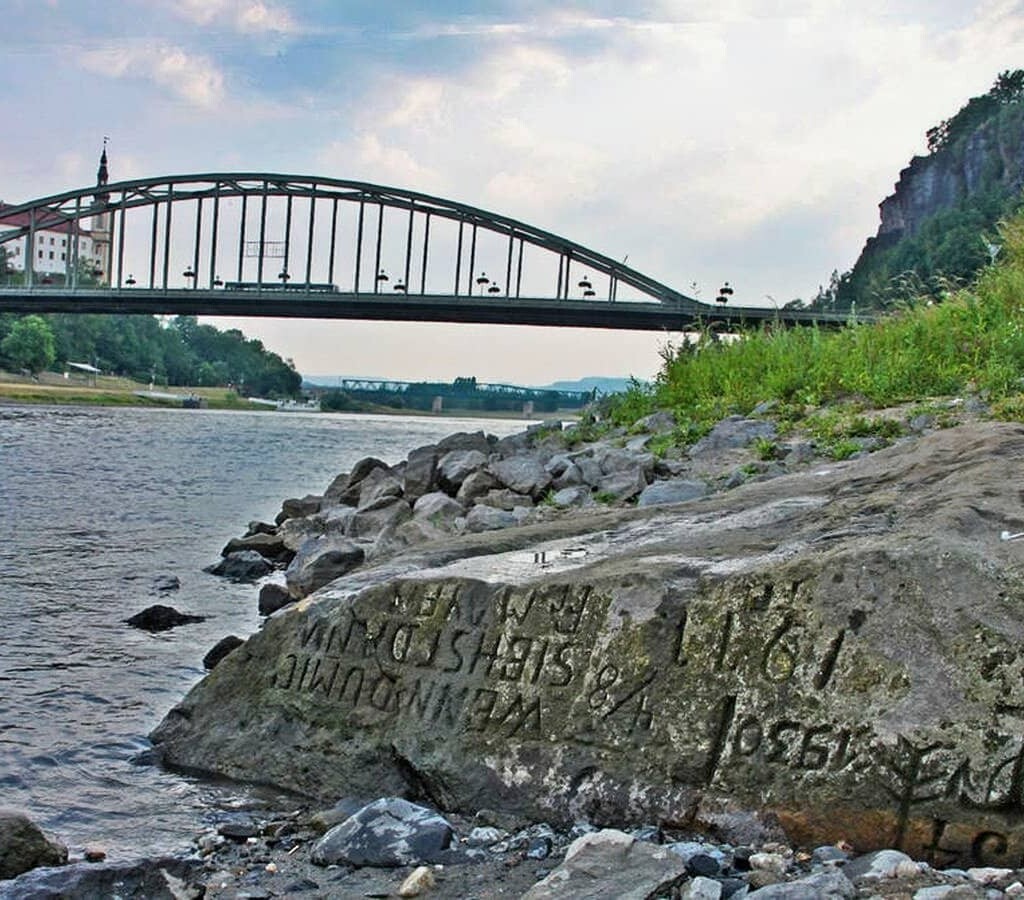The hunger stone and its warnings: what these messages from the past reveal. Europe is facing one of the harshest summers in years and drought threatens agricultural productivity. Along the Elbe, more than a dozen stones with dire messages have been found.
Hunger Stones Czech Republic Revelations
While Europe faces one of its harshest summers in years, drought threatens agricultural productivity.
Traditionally, the Central European region, which includes parts of Germany, the Czech Republic, Slovakia, Austria and Hungary, has relied on its fertile soil for food production.
Throughout history, drought has been the main cause of famine in the region and as such has been documented by various sources.
While books from different eras serve as witnesses to the ravages of drought, some landmarks give us a deeper and more poignant look at the horrors of daily life in famines and economic crises.
These milestones were placed like boulders on the riverbank with inscriptions referring to historic droughts when water levels were at their lowest.
When the river level drops below this point, the strange rocks reappear, reminding locals of a difficult time in the past. These rocks are known as “hungry rocks” and are characteristic of the area around the town of Děčín in the northern Czech Republic.
“Due to the ongoing drought, more than a dozen ‘hungry stones’ have appeared on Elba with ominous messages”
The town is located near the German border and has always been inhabited by Germanic people, so it is not surprising that the inscriptions on this famine monument are written in German.
More than a dozen famine rocks have appeared along the Elbe due to prolonged drought, with frightening messages.
On one of the rocks, which belongs to 1616, is written, “If you see me, cry.”
Another, dating back to 1417, warns the future viewer of the horrors caused by the low water level:
“If you see this stone again, you will cry, so shallow was the water in the year 1417”
The relationship between the receding river and tears seems to be a common feature of all the hunger stones, as well as an apocalyptic undertone.
River Elbe, lifeline of Děčín
” Who saw me once will be cried. Whoever sees me now will cry. We cried, we cried and you will cry.”
While drought still has the potential to disrupt the economy, the times when these inscriptions were made were much more vulnerable to these natural disasters.
In particular, the city of Děčín relies on the Elbe River as a lifeline: the drought not only affects crops but also makes river navigation impossible, as ships cannot pass through such shallow water.
This disruption of traffic affected many people, as trade had come to a standstill. It caused famines and other problems related to the economy of the place. Thus the city would suffer a slow and painful decline until nature decided to reduce it with rain.
There are dozens of these stones and, according to city records, there may be one dating back to 1115, but its exact location is unknown.
Some of the stones in and around Děčín have been used many times, with engravings made over the centuries, such as the one found in Tichlowitz, where the stones can be seen: 1892, 1903, 190, 1911, 1928, 1963 and 2015.
“The stones bring bad news and remind us of the hardships suffered in times of drought”
The river has lost its importance
However, these stones lack the sinister message of their medieval predecessors. This shows how the river has lost its importance to humans, who once depended entirely on its unpredictable nature for survival.
With the advancement of technology, the rocks have only become beacons that honor tradition, but before that, they bring bad news and remind us of the hardships suffered in times of drought.
Some of them bear the initials of their creators, adding a personal touch to the anguish caused by low water. When the Elbe River reached its historic low, the Hungry Rocks continued to appear on its banks.
But that’s not the only thing to reappear. World War II memorials have also returned from the past, to remind locals of another ordeal, man-made rather than natural.
Along the coast, unexploded bombs and hand grenades can be found, as well as other artifacts, rusted and submerged in the sand.
Positive touch
Since the inscriptions on the stones with their sad warnings about times gone by created a somewhat unsettling feeling, someone decided to give them a dose of optimism.
An unknown author recently wrote an inscription on one of the stones, which reads:
“Don’t cry, my daughter, don’t worry. If it is dry, sprinkle water on your field”
This article has been adapted by InfoMistico.com / Source: elconfidencial.com




